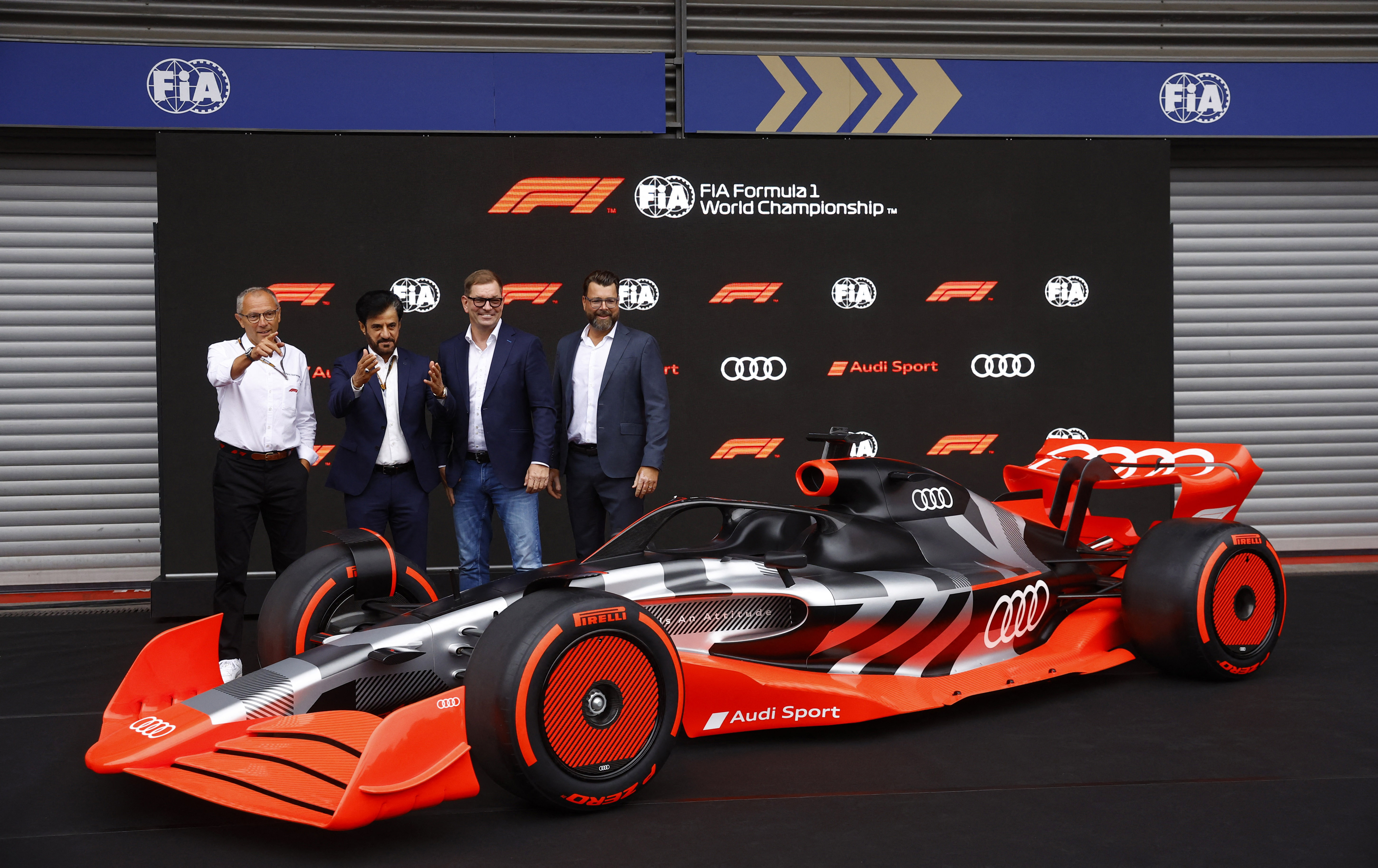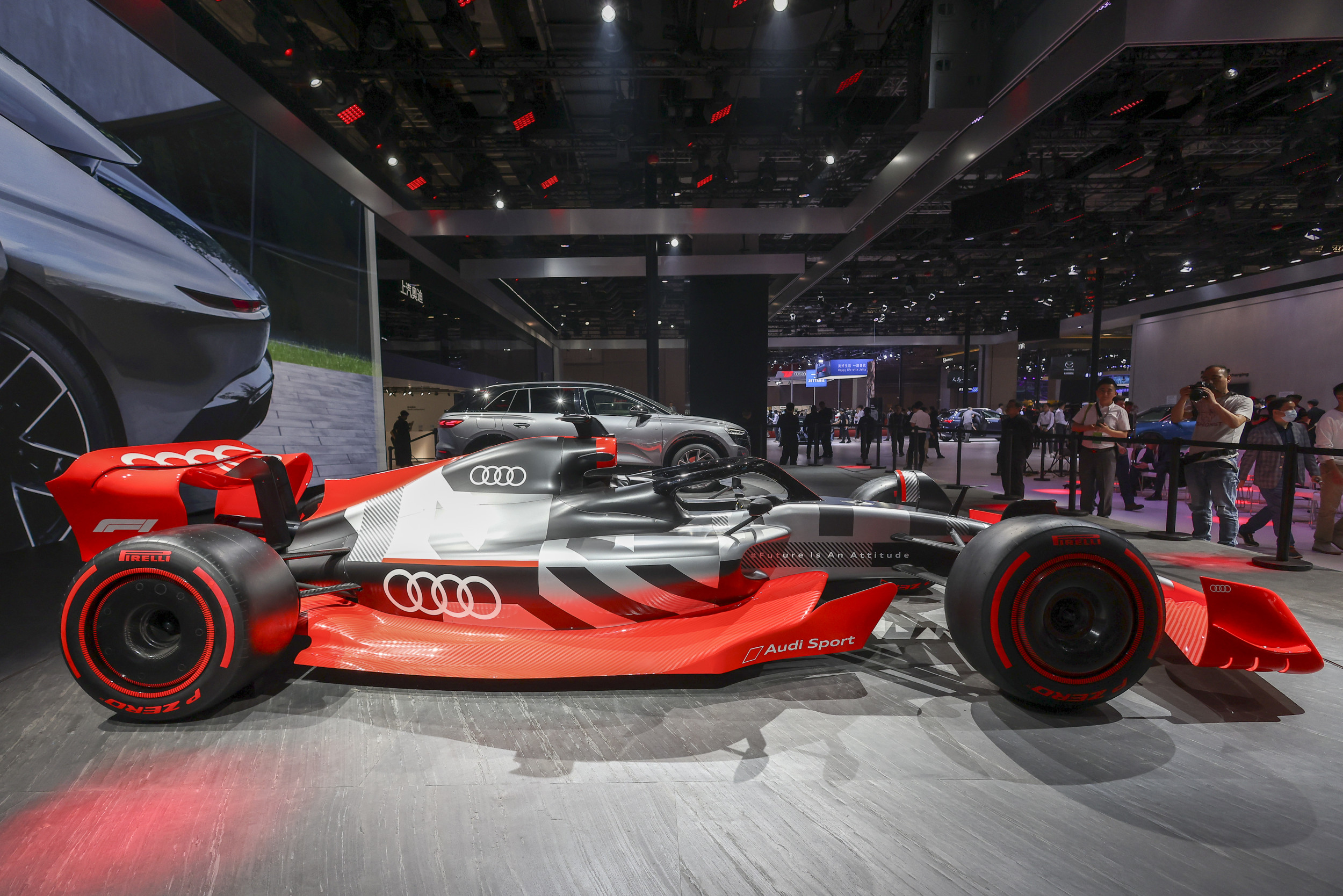Formula 1 stands at a perilous crossroads, facing a monumental decision that will undoubtedly define its identity for the next generation. The debate, simmering with tension and whispered in the paddocks, has finally erupted into a full-blown dilemma: should the pinnacle of motorsport continue its ambitious push toward a sustainable, hybrid future, or should it succumb to the siren song of nostalgia and bring back the raw, thunderous V8 and V10 engines of a bygone era? This is not merely a technical question; it’s a high-stakes conflict pitting the romance of the past against the relentless march of technological progress, with billions of dollars and the very credibility of the sport hanging in the balance.

At the heart of this storm is FIA President Mohammed Ben Sulayem, who has voiced growing concerns over the staggering costs associated with the current turbo-hybrid power units. These engineering marvels, while representing the zenith of automotive innovation, come with a price tag of around $15 million per unit, making them the most expensive engines in motorsport history. Ben Sulayem argues that a return to simpler, naturally aspirated V8 or V10 engines would drastically lower the financial barrier to entry, potentially attracting new teams and manufacturers to the grid. It’s a pragmatic argument rooted in accessibility and, on the surface, a sensible solution to curb escalating expenses.
Moreover, this proposal taps into a deep well of sentiment among a significant portion of the fanbase. For years, enthusiasts have lamented the muted, almost clinical sound of the hybrid engines, yearning for the visceral, high-pitched scream that once defined a Grand Prix weekend. The roar of a V10 was more than just noise; it was the sport’s anthem, a primal soundtrack that connected fans to the raw power and danger of F1. The FIA knows that bringing back that sound would be an instant emotional victory for millions, a powerful dose of nostalgia that could reinvigorate passion for the sport.
However, this romantic notion is colliding head-on with the cold, hard reality of corporate strategy. Major manufacturers, both current and prospective, have invested astronomical sums in Formula 1 based on its commitment to being a laboratory for the future. The sport sold them a vision of a green, technologically advanced platform where they could develop and showcase sustainable fuels and hybrid systems directly relevant to their consumer road cars. A sudden reversal to outdated, gas-guzzling technology would be more than a disappointment; it would be a betrayal.

Leading the charge against this potential regression is Audi. The German automotive titan has committed to a multi-billion dollar Formula 1 entry in 2026, a project driven entirely by the promise of sustainable innovation. Audi’s investment in a new state-of-the-art power unit is fundamentally linked to the sport’s alignment with its own road car future, which is increasingly focused on electrification and efficiency. The company has been unequivocal: a return to V8 or V10 engines would not just jeopardize their investment—it would likely cause them to withdraw from the sport entirely before their first car ever turns a wheel in anger.
This sentiment is echoed by another potential heavyweight contender: Cadillac. Backed by the immense power of General Motors, Cadillac is eyeing an F1 entry with the ambition of building its own engine by 2028. This move is strategically tied to GM’s global electrification roadmap and its desire to showcase its capabilities in sustainable performance technology. For Cadillac, F1 is a platform to prove its engineering prowess in the hybrid era. Reverting to V8s would render the entire project pointless, transforming a forward-looking technological challenge into a meaningless exercise in nostalgia that holds no relevance to their brand identity or future direction.
The shadow of another Volkswagen-owned brand, Porsche, also looms large over this debate. While their previous bid to enter F1 with Red Bull fell through, their interest in the sport has not waned. Like Audi, Porsche views Formula 1 as the ultimate proving ground for advanced technologies that can be trickled down to their high-performance road cars. Their interest is contingent on the sport remaining at the forefront of innovation. A retreat to older, less sophisticated engine formulas would almost certainly extinguish any remaining possibility of Porsche joining the grid, closing the door on another iconic name.

This has created a powerful “German block,” with manufacturers like Audi, Mercedes, and potentially Porsche united in their opposition to what they see as a technologically backward step. For them, Formula 1 is not just a marketing platform; it is a strategic battleground for shaping the future of the automobile. They are in the business of selling tomorrow’s technology, not yesterday’s memories. The argument extends beyond mere brand alignment; it cuts to the core of why they justify spending hundreds of millions of dollars on motorsport. Without the promise of relevant technological development, the F1 business model collapses for them.
The FIA’s decision, therefore, will trigger a chain reaction with profound consequences. Choosing nostalgia might please a segment of the existing fanbase, but it risks alienating a new, younger generation of fans who are more attuned to sustainability and technological progress. More critically, it could trigger a mass exodus of the very manufacturers F1 needs to secure its long-term health and credibility. The loss of a brand like Audi would be a devastating financial and reputational blow. The potential loss of Cadillac and Porsche would further diminish the sport’s global appeal and technological relevance.
Ultimately, the choice facing Mohammed Ben Sulayem and the FIA will define Formula 1’s soul for decades to come. Will it be a forward-thinking, innovative powerhouse that leads the charge in sustainable performance, attracting the world’s most advanced engineering minds and corporations? Or will it become a retro-themed spectacle, content to trade genuine innovation for the comforting, yet ultimately hollow, echoes of its past? The roar of the engines in 2026 will be more than just a sound; it will be the answer to the most critical question the sport has faced in a generation.
News
Die Welt hat sich weitergedreht: Marie Fredriksson rechnet leise ab – 5 Stars, die sie im Stich ließen.
Der Klang von Roxette war der Soundtrack einer ganzen Generation. Mit Hits wie „It Must Have Been Love“ und „The…
Conny Froboess: Die bittere Wahrheit hinter der Traumkarriere – Im Alter trägt sie eine unheilbare Wunde.
Der Name Conny Froboess ist in Deutschland untrennbar mit einem Gefühl von Leichtigkeit und sonnigen Kindertagen verbunden. Wenn ihr größter…
DER WACKELDACKEL DER REPUBLIK: WIE MERZ’ „HERBST DER REFORMEN“ IN EINER EISZEIT DER STARRE ENDETE UND UNSERE ZUKUNFT VERPFÄNDET WIRD
Einbruch in die politische Wirklichkeit: Die bittere Bilanz nach dem Versprechen des Aufbruchs Mit großen Versprechungen begann die Zeit, die…
Bommes’ Nerven liegen blank: Unerwarteter Eklat in der letzten Folge von „Gefragt – Gejagt“ schockt die Fans
Ein Augenblick, der das harmonische Ende einer Quiz-Saison sprengte. Ausgerechnet in der vorerst letzten Ausgabe der erfolgreichen ARD-Show „Gefragt –…
Herzschlag-Finale in der Scheune: Friedrich und Laura trotzen dem TV-Kitsch mit dem ehrlichsten Liebesbeweis der Staffel
Der leise Moment, der lauter spricht als jede große Inszenierung Es war der Moment, auf den Millionen von Zuschauern der…
Kai Pflaume bricht sein Schweigen: Das 30-Jahre-Geheimnis hinter Deutschlands Vorzeige-Ehe und warum seine Ilke sein wichtigstes Korrektiv ist
Die deutsche Fernsehlandschaft hat viele Gesichter, aber nur wenige sind so konstant, so sympathisch und so untrennbar mit dem Gefühl…
End of content
No more pages to load












